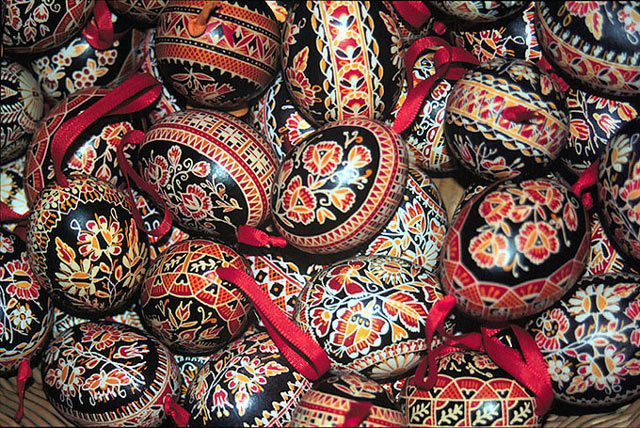
The Communists left power in 1989. These days jugglers, mimes, musicians, and artists vie for attention in Prague's Old Town Square, and churches open their doors for public concerts on summer nights. Tourists from all over the world flood the lively capital city. And almost everyone goes home with at least one Easter egg painted with bright, intricate designs on the fragile shell, which costs about a dollar and a half.
Michal, twenty-eight, is a buyer for Ceska Lidova Remsla, galleries in Prague devoted to traditional Czech crafts. Ludmilla Kocisova paints only for the Ethnographic Institute and these shops."My mother taught me how to make traditional designs and how to create my own. You know, no egg design is purely traditional; every single one is different, like snowflakes."
©
Paola Gianturco and Toby Tuttle 2003-2009

